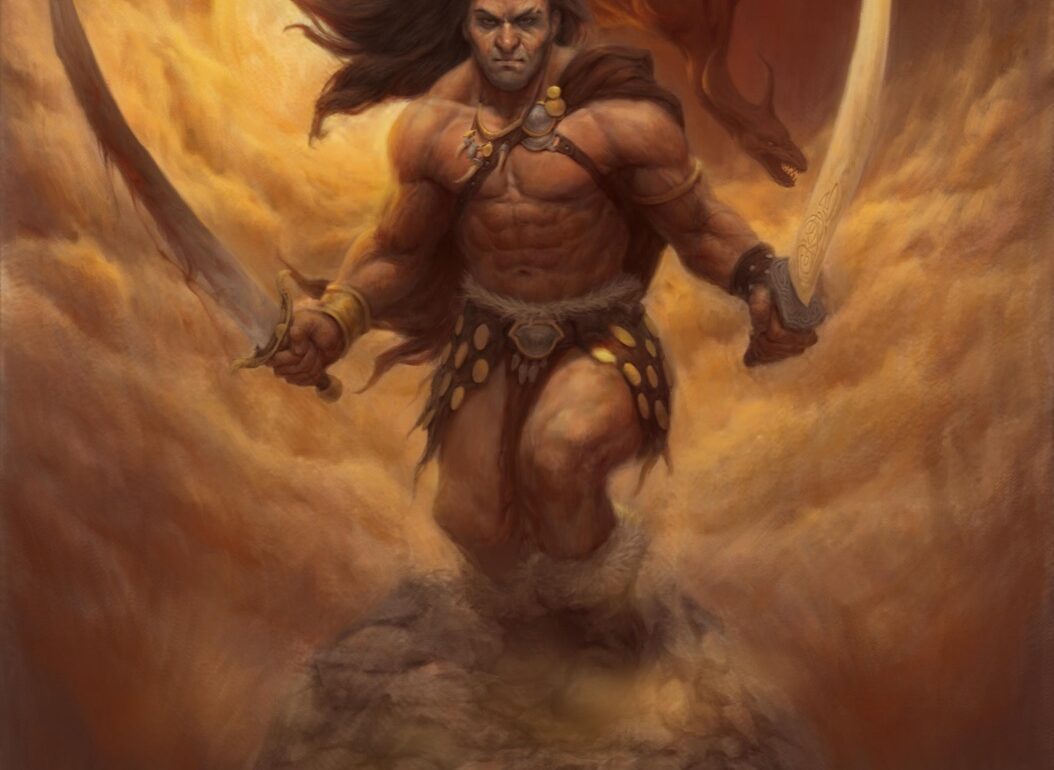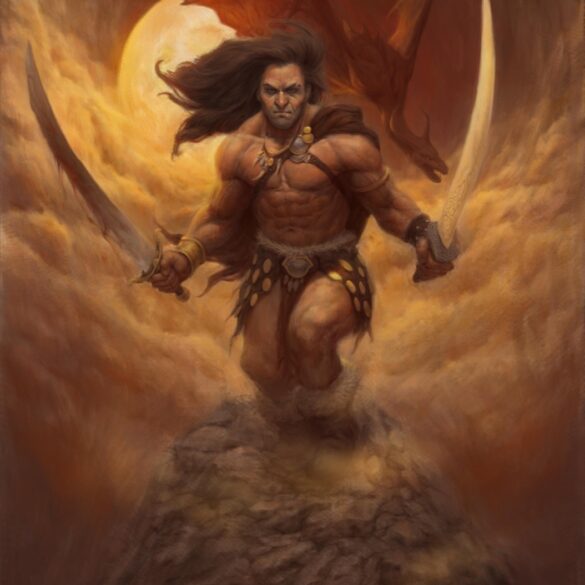If you’re a fan of beautifully rendered fantasy art, you’re sure to enjoy the work of Carlos Amaral.
The Portugal-based artist has a gift for creating exquisitely detailed line art that makes even the most exotic creatures feel realistic and plausible.
Besides crisp details, Carlos’s portfolio also stands out for his use of dynamic poses, silhouettes and textures that make each figure come to life.
These skills have been put to work in the games industry where Carlos has served as a concept artist for the likes of Mierce Miniatures and Mythic Games, including the recent blockbuster board game Anastyr.
In the interview below we learn key insights into the artist’s process like:
- why taking a break from art isn’t always a bad thing
- how deadlines can keep you from overworking a piece
- why it’s important to enjoy the art in your own portfolio
We’ll also enjoy a selection of some of Carlos’s stunning fantasy art, plus learn why dollar store pens might be worth a second look…
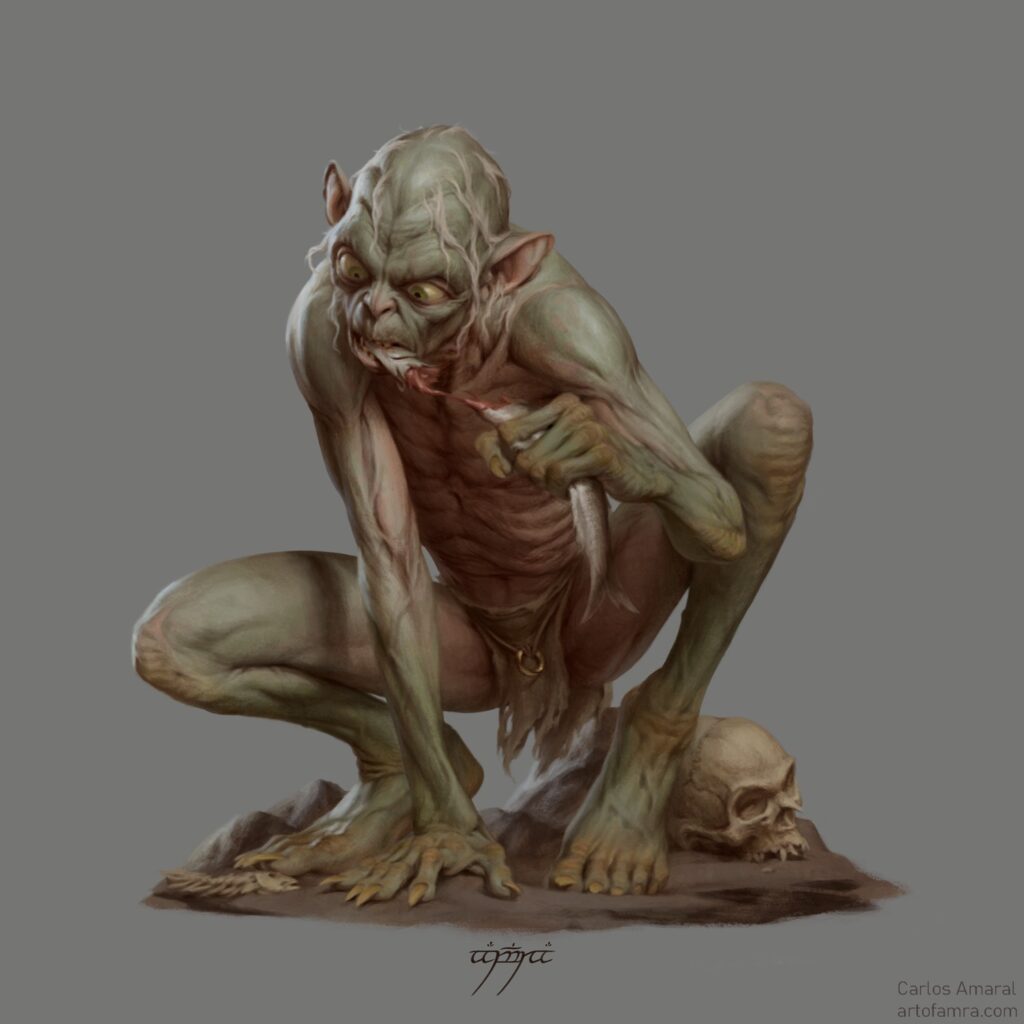
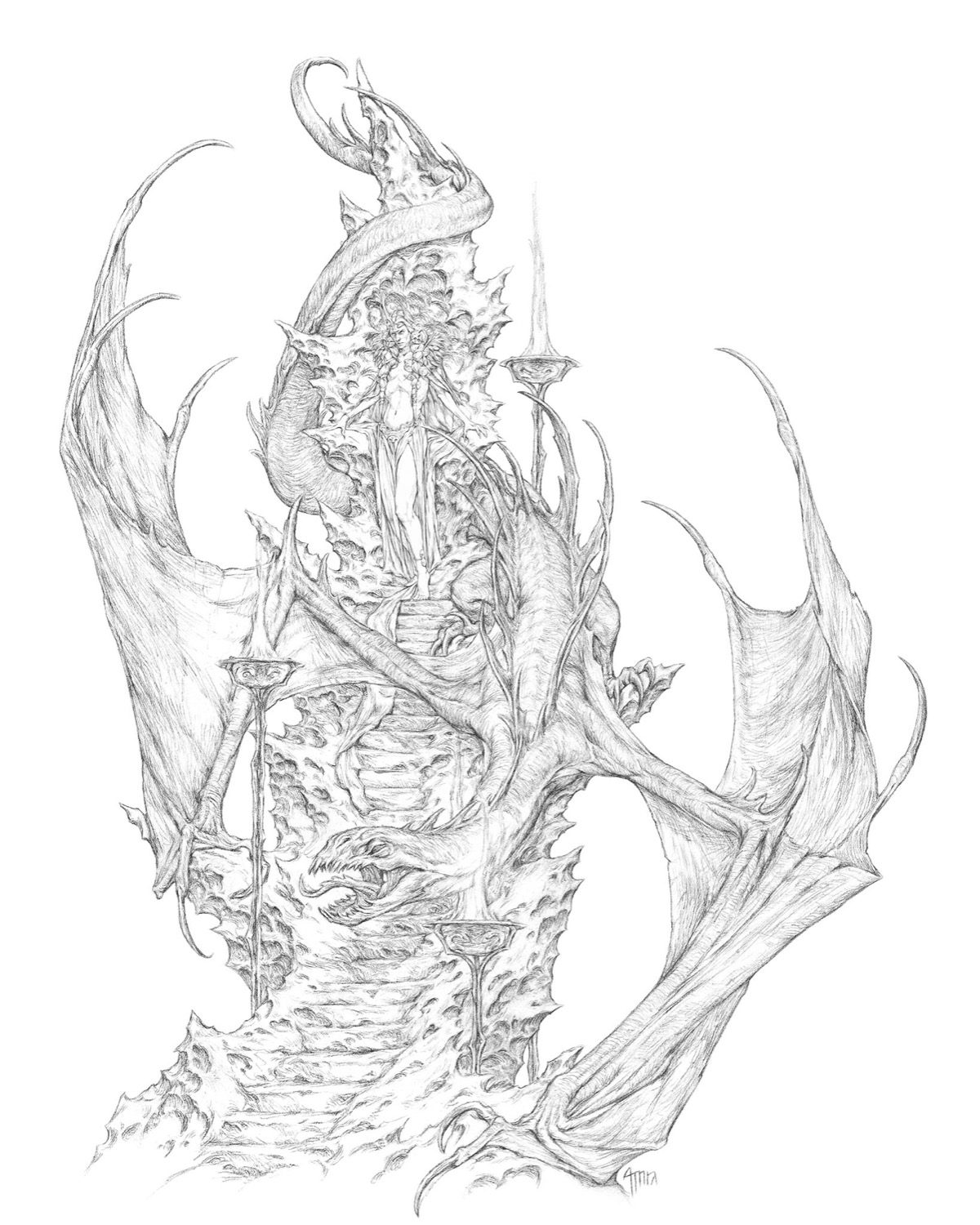
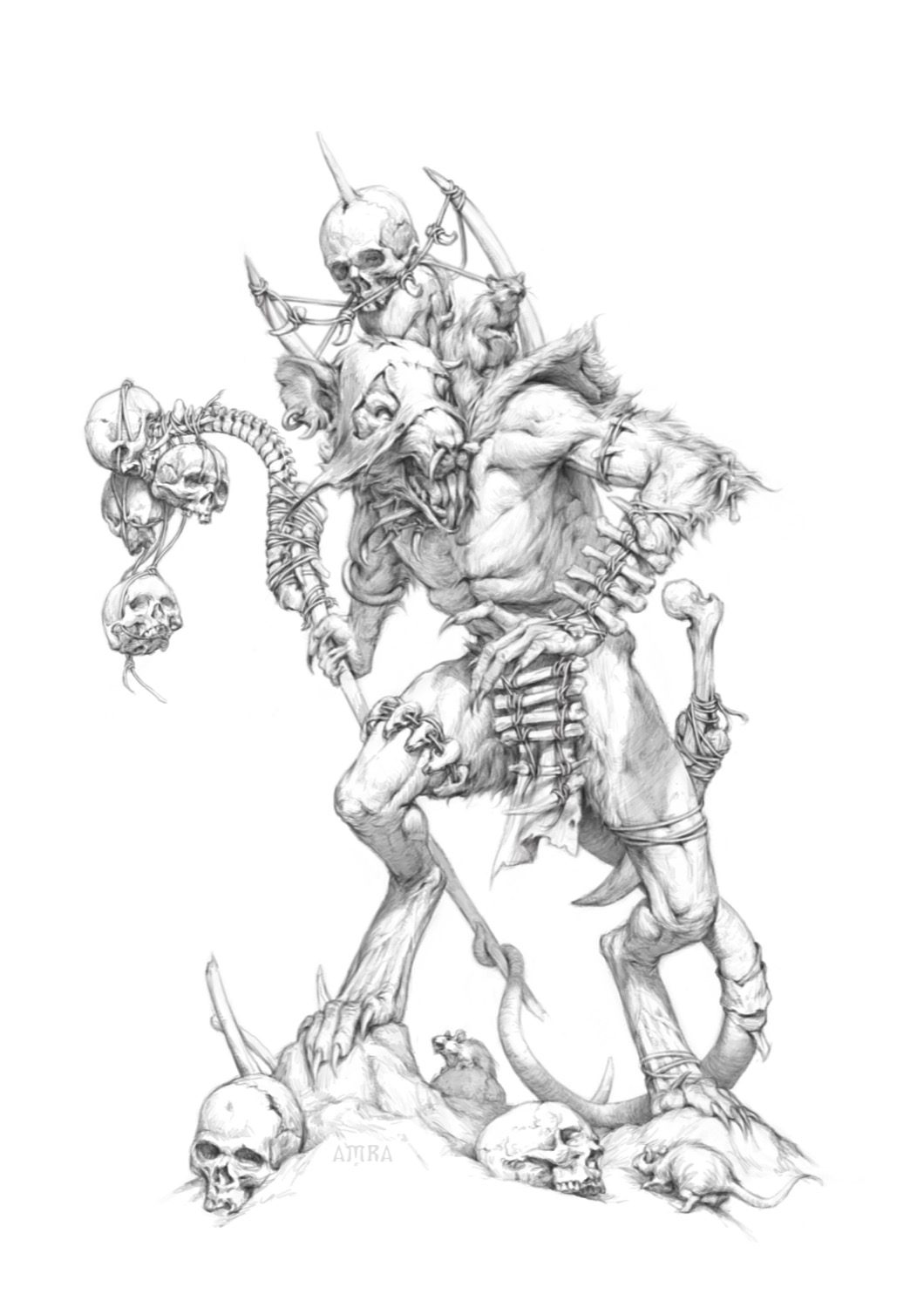

When did you know you wanted to pursue art as a career?
I’ve drawn ever since I was able to hold a pencil, but never thought of the possibility of doing it professionally, especially growing up in a small countryside village in Portugal, where most people don’t imagine that almost every object or entertainment that surrounds us comes from some form of visual art/concept first. Therefore art isn’t something that’s encouraged, and gradually my love for drawing diminished over time.
Only after finishing high school, with the urgency of figuring out what to do with my life, I realized that art, something that I felt I was kinda good at (boy, was I wrong!), was an actual career that could be pursued and so my love for it rekindled, starting my self taught journey.
Where do you find inspiration and how do you overcome creative block?
Growing up with constant contact with nature has perhaps made it one of my biggest sources of inspiration, as well as all forms of art and entertainment: from drawings and paintings to books, films, music, games, etc. Anything really…
Inspiration can come from every and anywhere, but can also vanish when we most need it. When those creative blocks come, we can either keep pushing through or take a break and hopefully recharge. I think it’s important to accept that those times come and go, and to try to not feel guilty when taking a break, because often the time that we feel is being wasted will actually help in solving problems such as art blocks.
I think it’s important to accept that those times come and go, and to try to not feel guilty when taking a break, because often the time that we feel is being wasted will actually help in solving problems such as art blocks.
Another thing that can also help is trying different mediums, art forms, or hobbies. Lately sculpting has been helping me feel productive while still having fun, when I’m blocked or tired of my 2d work.
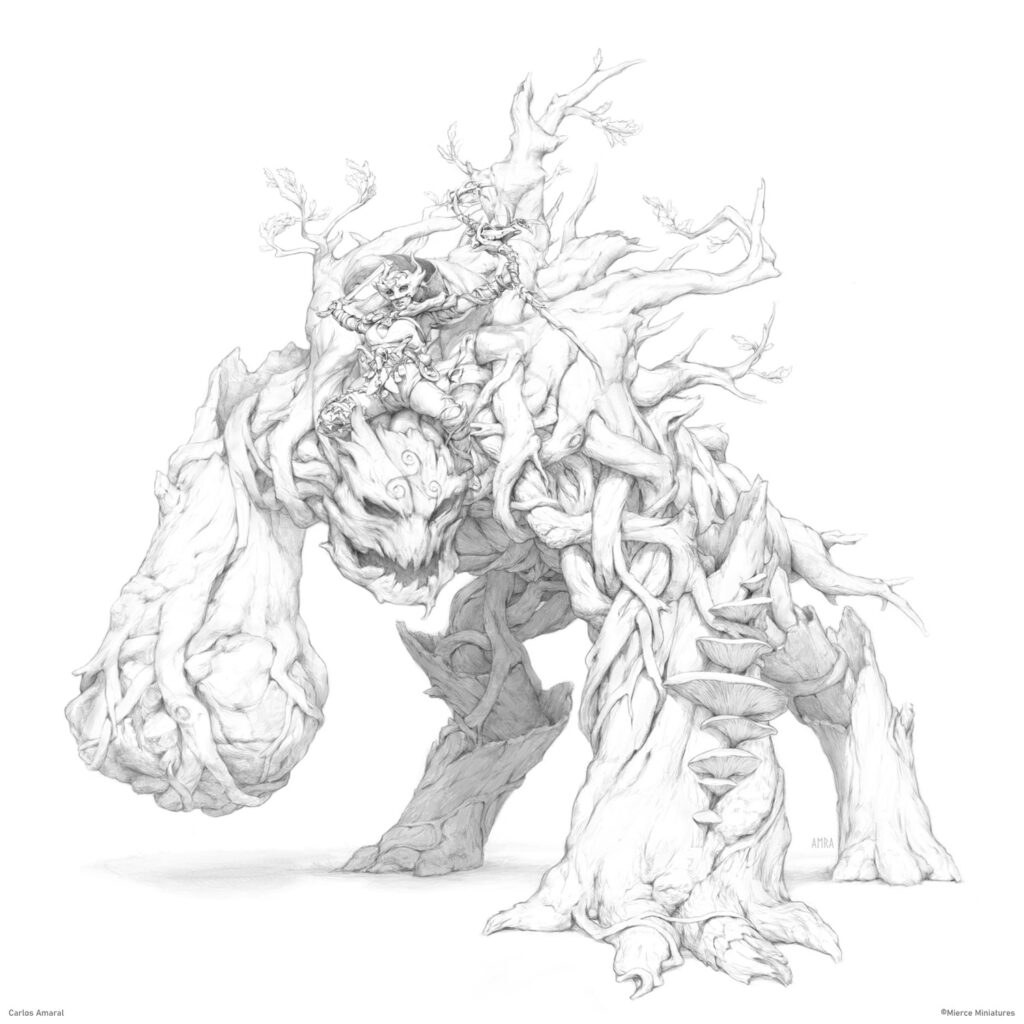
What’s your process like when you start a new piece? Where do you begin and how do you know when to stop?
Most of my work starts with roughly exploring design ideas, compositions and poses with thumbnail sketches, and sometimes preliminary sketches of portraits and/or specific elements. This is perhaps my favorite part of the process, where there isn’t as much pressure and there’s a lot of potential and possibilities. I then take the chosen thumbnail to a rough sketch that is then refined after its approval, following client notes if there are any, and adding notes of my own if it’s a concept, in order to make it as clear as possible to the sculptor.
Knowing when it’s time to stop is a bit tricky, but there are usually two things that help me know when to stop: The first one is simply the deadline, you have to hand the test over to the teacher once the bell rings! The other, more often used, is when I reach a point that anything more I do in the piece starts hurting it, meaning it’s time to stop noodling around.
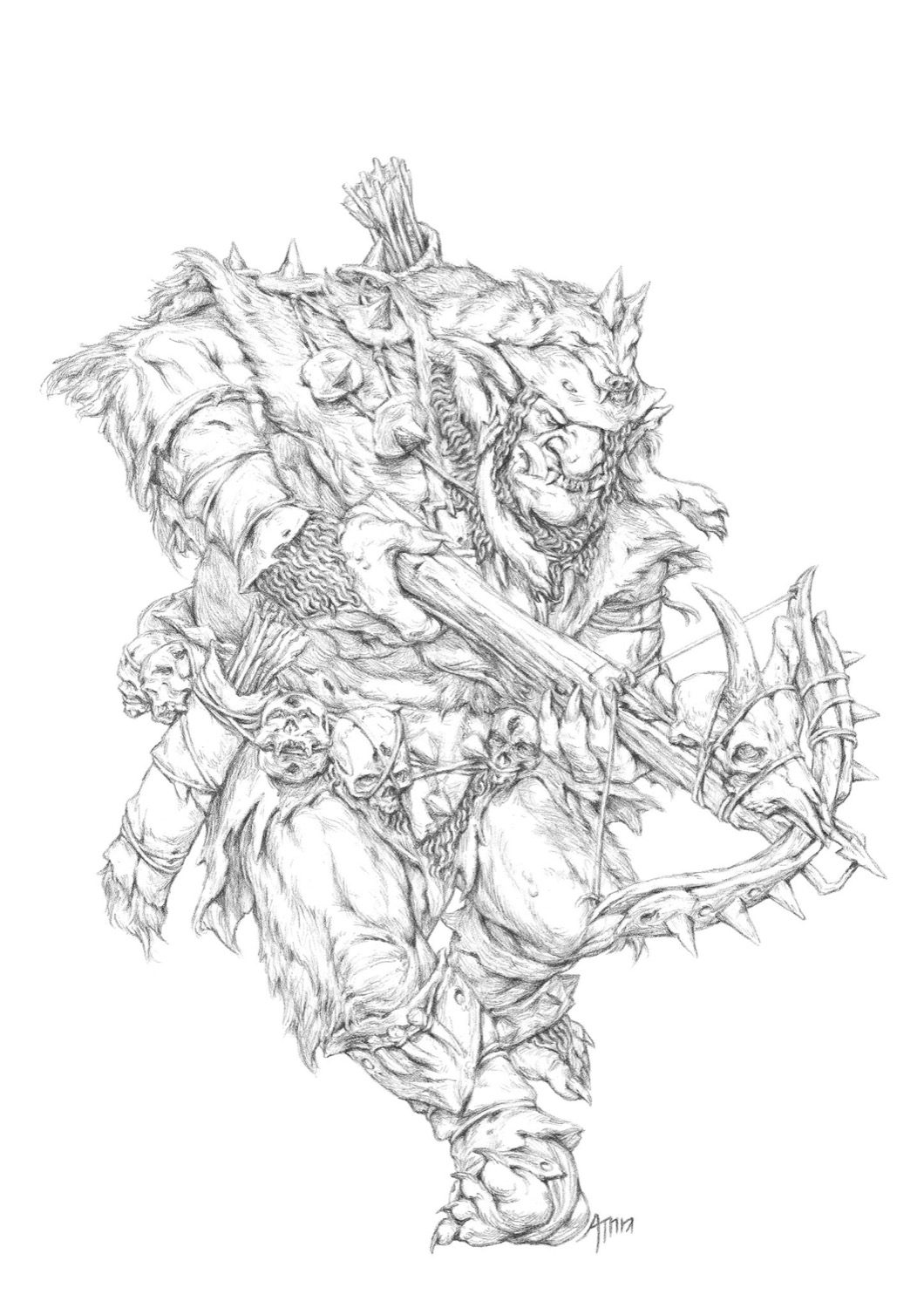

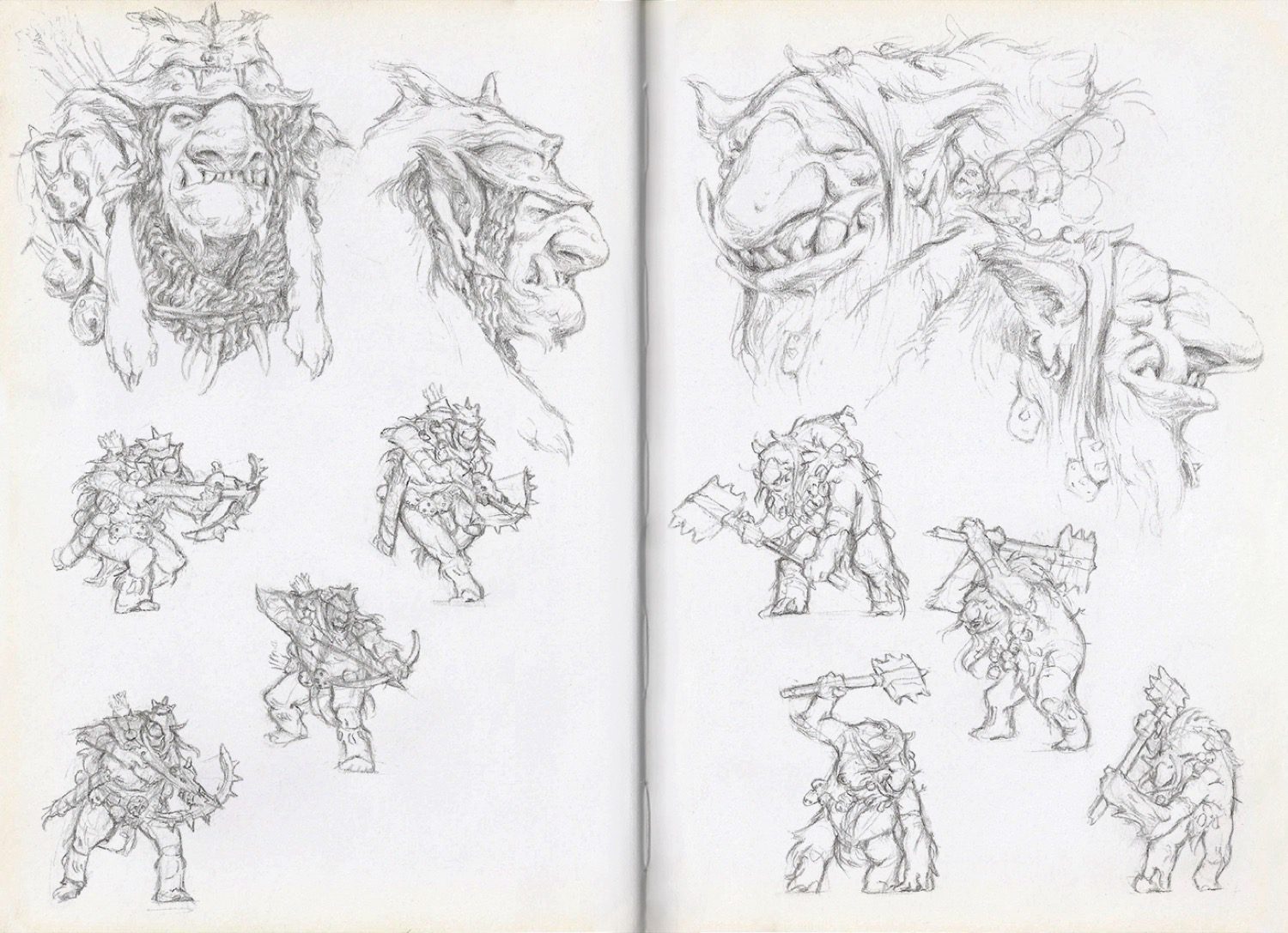
You’ve designed some incredible creature designs for the miniature market. What’s it like creating something that will be converted into a physical 3D object?
I love working in the miniature market! Having my art come to life in 3D was actually the reason that made me want to be part of this industry, I feel like a kid every time I see the end product. I was always obsessed with toys, and maybe not having many as a kid made me want to compensate for it now, ha!
Regarding the work itself, to create concepts for miniatures requires a certain sensibility of form, space and scale, to imagine how the drawing will translate to a small figure and to have it look the best way possible in every angle, with an interesting and dynamic silhouette, and of course something that will be fun for miniature painters to paint.
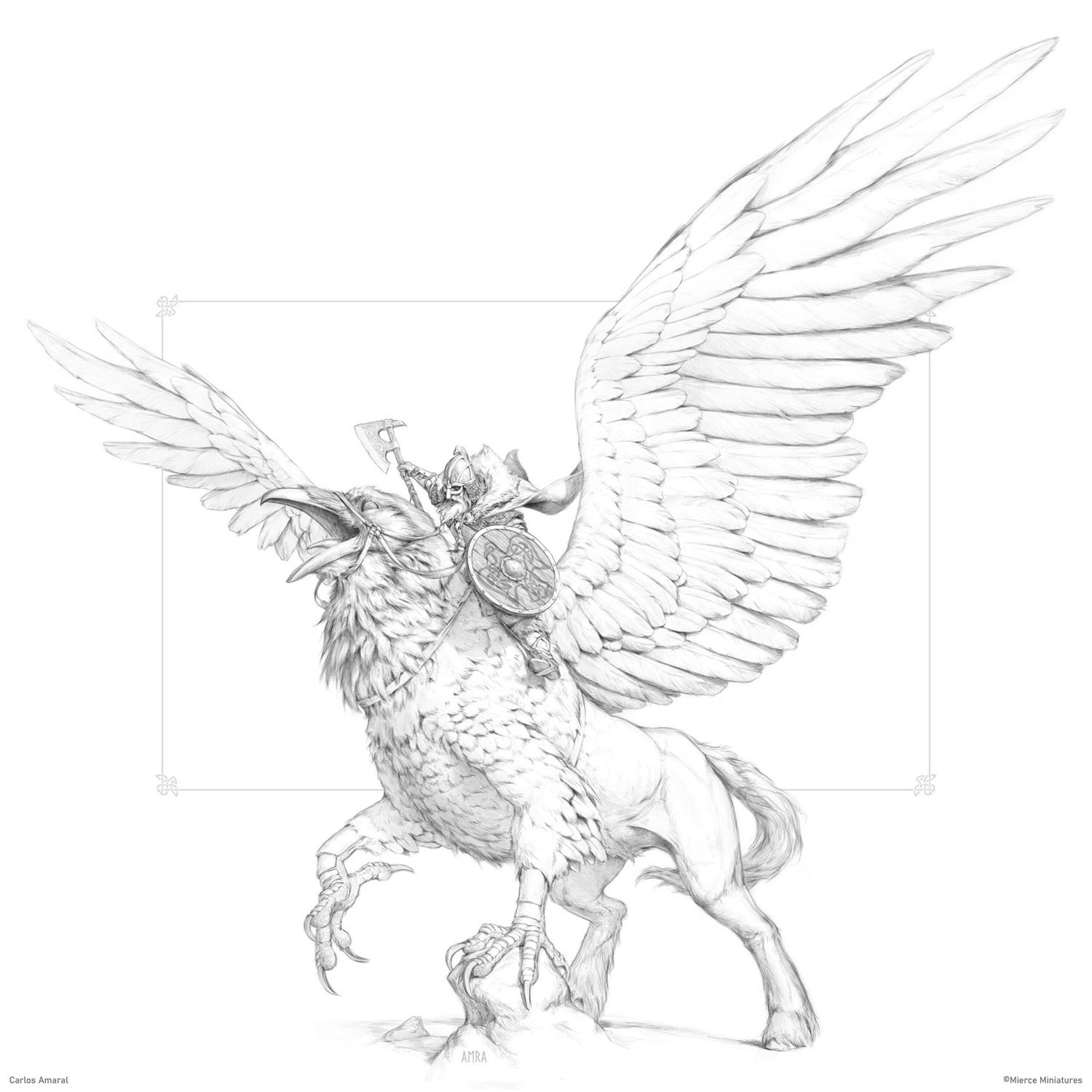
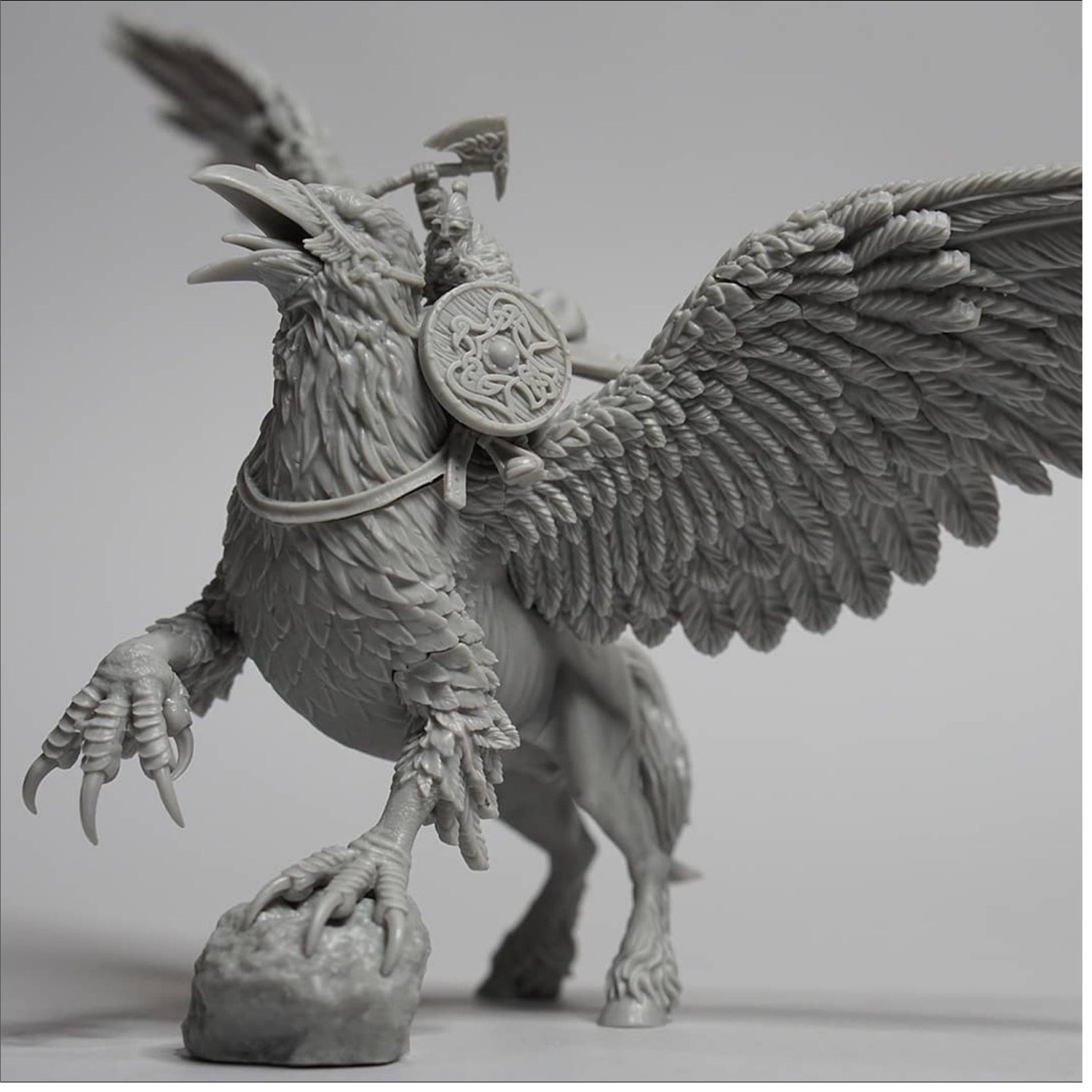
Interested in seeing more miniatures based on Carlos’s artwork? Check out Mierce-Miniatures.com
We have to ask, what is that 10 color ballpoint pen and how the heck are you doing that?!
These 10 color ballpoint pens can be found in many stores now, I’ve seen them in supermarkets, dollar stores and even clothes stores. I describe these pens as extremely cheap and portable “watercolor” sets, since the process for me is very much similar to watercolors: slowly building up the tones and colors with “washes”, which in this case means layers of mostly soft strokes.
One downside, and probably why I haven’t drawn with it in a while, is that it can take a long time to finish even a small piece, but I encourage people to try it!
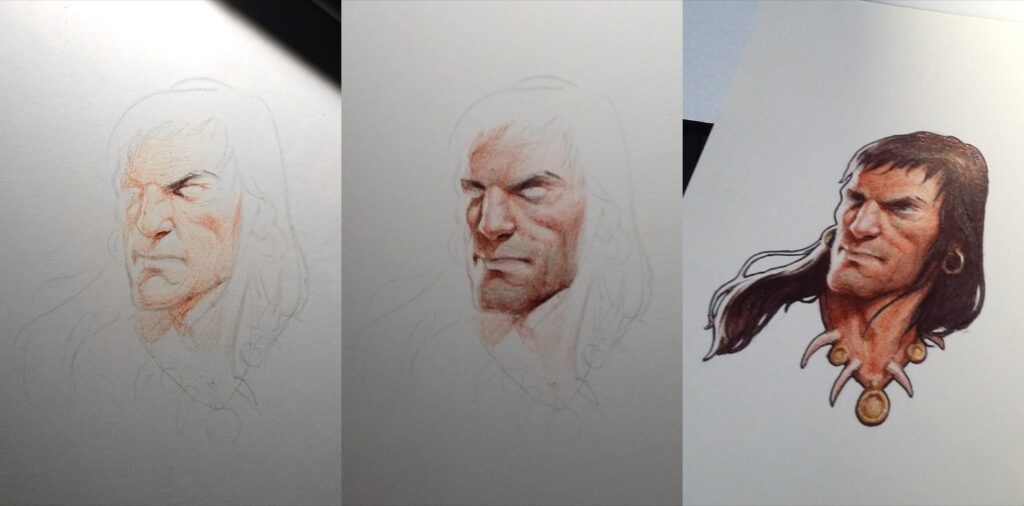

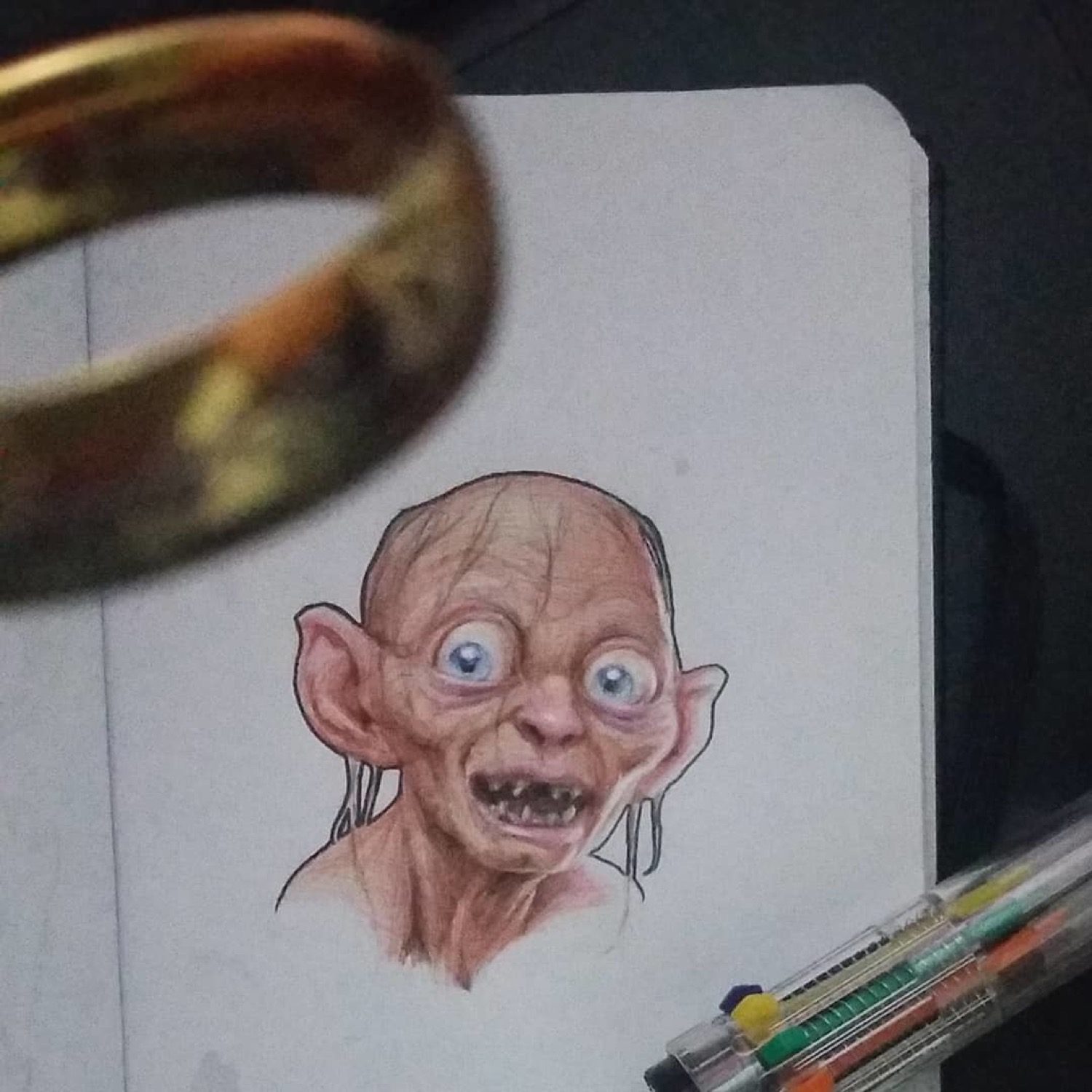

If you were trapped on a desert island with just one art supply, what would it be?
Desert island means no electricity, so the possibility of answering “computer” is discarded (I’ll miss you, internet!), so I guess I’d either stick to the good old pencil and paper, or I’d take some oils and would finally learn to oil paint (or try to).
Let’s say you encounter a genie who grants artists wishes. If you could wish for instant mastery of one creative skill, what would it be?
Having instant mastery would probably make me feel more like an impostor than I already do, but I’d most likely pick oil painting. It’s the painting medium that amazes me the most, but also scares me the most. I definitely have to try it though, it’s on my list of things to do once I have more time.
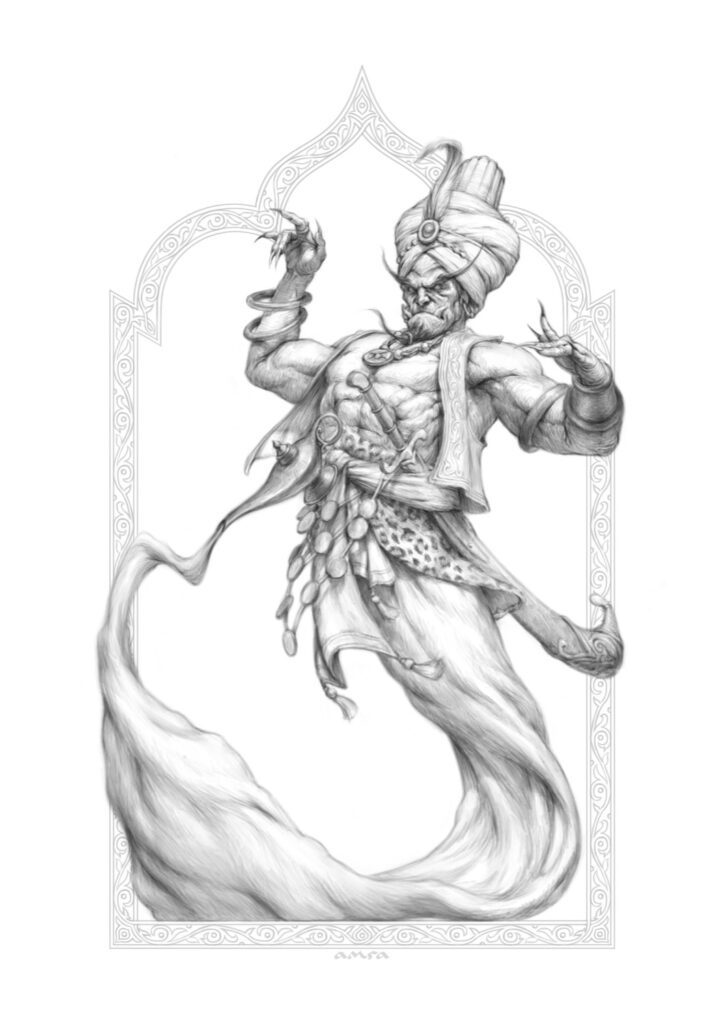
Final question – any words of wisdom for someone looking to become a professional artist one day?
I think there are 3 things that I unconsciously did that can be helpful to aspiring professional artists:
- Do the work that you like doing and make your portfolio around that! It might seem obvious but the opposite happens quite frequently, leading to getting caught up in a spiral of doing work you hate doing… Because one work can lead to another and so on, which is a positive thing if it happens with work you love doing.
- Don’t be afraid to reach out to companies for work! If you feel like you’re not good enough, don’t worry, I do too, and so does pretty much every artist I know. There will always be artists that are more skilled than you, but there will also be artists less skilled than you making more money than you… You might get a lot of “nos”, sure, but you might also gain feedback that can be helpful to your artistic growth, or who knows, even a “YES”! I remember sending so many emails and receiving only a couple replies that opened a few doors, and from behind those doors came more and more opportunities. Work leads to more work as you get more experience and showcase it in your work.
- Last but not least, make friends along the way. The art industry is huge, but at the same time it feels like a small community. Be nice to people and make friends that you can share experiences and grow with.
A big thank you to Carlos Amaral for taking the time for this interview!
👉 Want to see your art featured on Mega Pencil? Click here to apply!

